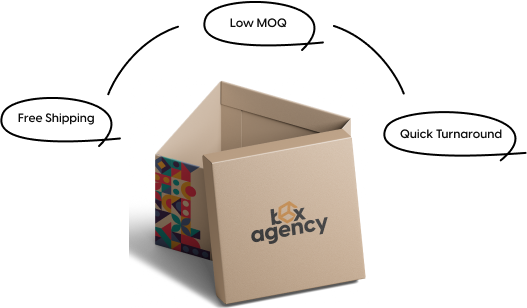How to Seal Mylar Bags: Components, Ways, and Storage Time
The current era advancements have highlighted the importance of airtight packaging in the food industry. Airtight packaging restricts the contact of oxygen with the food and does not cause the loss of flavors or nutrients. This helps in maintaining the quality and textures of the food items for extended durations. The packaging also offers a secure and leak-proof transportation of food items to your destination.
Mylar bags have significantly become advantageous to the food industry by maintaining the quality, freshness, and nutritional value of edible products. This minimizes oxygen and moisture to extend the shelf life of food products. Mylar bags help the brands retain the vitamins and minerals in food products to earn customer satisfaction.
What is a Mylar Bag?
A Mylar bag is a strong, durable, and flexible packaging material manufactured using thin polyester film to protect and preserve various products. Mylar bags are ideal for storing dry items, including pulses, grains, beans, flour, etc. The packaging is crafted to increase the shelf life of the products with its moisture and oxygen-resistant properties. They maintain the freshness of food and prevent its spoilage for extended periods.
What Things Are Needed Before Sealing a Mylar Bag?

There is a list of things required before sealing a mylar bag:
-
Food Items
Dry food items with low moisture content are preferred to store in Mylar bags. Mylar bags are crafted to prevent spoilage using oxygen absorbers, ensuring the long-term storage of food products.
-
Appropriate Number of Mylar Bags
The brands should have an appropriate number of Mylar bags to store food for extended durations. The bags are manufactured in custom dimensions to accommodate different quantities of food.
-
Oxygen Absorbers
Oxygen absorbers are small packets of iron powder that react with oxygen inside the mylar packaging to reduce the risk of food spoilage. These maintain the quality and nutritional value of stored food items.
-
Heat Sealer Tool
The heat sealer tool creates an airtight seal, preventing food from spoilage or oxidation. This restricts the entrance of oxygen or moisture inside the mylar packaging and protects the food items as long as possible.
-
Labels & Stickers
Labels and stickers are imperative for customers to know what’s stored inside the Mylar packaging. They highlight the expiry dates and potential allergens to help keep track of stored food items.
List of 7 Easy Ways to Seal a Mylar Bag

Seals in Mylar bags are designed as an oxygen barrier to keep the food dry and secure the packaging contents for extended durations. Here we have listed 7 easy ways to seal a mylar bag effectively:
1. Heat Sealing
Heat Sealing is a strong airtight seal that protects the contents from oxygen, moisture, or pests. This maintains the freshness of contents for longer durations. To seal the packaging using a heater sealer, place the opened end of the Mylar in between the heating elements, apply steady pressure, and let the mylar material melt to create a secure seal. Release the pressure, gently check the seal, and store the Mylar bag in a dry space.
2. Vacuum Sealing
Vacuum sealing is the process of removing the air from the packaging before sealing the contents inside it. This preserves food and minimizes the chances of oxidation or spoilage. To seal the packaging, place the contents inside the vacuum bag while leaving some space on top of it. Place the open end of the bag in between the sealer bars, and close the lid to let the vacuum remove the excess air. Once vacuumed, the sealer will automatically create an airtight seal. Gently check and store in a cool place.
3. Clip or Clamp Sealing
Clip or Clamp sealing is a simple sealing method used to close the Mylar bag. In this process, the open end of the bag is folded multiple times to create a thick layer, place the clip or clamp over the folded end and squeeze it tight to create a strong seal. Check the sealed side to ensure the security of contents for extended durations.
4. Ultrasonic Sealing
Ultrasonic sealing is the process of joining thermoplastic materials using high-frequency waves to create a strong airtight seal. The sound waves are typically generated in the range of 20-40 kHz using an ultrasonic transducer. These waves are transmitted through “sonotrade” to seal the Mylar material. The rapid vibrations cause friction to generate heat within the material molecular. The soft ends interlock and create a strong bond upon cooling.
5. Zipper Sealing
Zipper sealing conveniently stores the packaging contents with an easy open and close mechanism. A zipper closure holds two interlocking strips of plastic or metal to create a secure airtight seal. This preserves the freshness and quality of contents with an airtight barrier. Zipper sealing is mostly used in the food industry and for personal care products.
6. Adhesive Sealing
Adhesive sealing involves using glue or any other adhesive substance to join the Mylar packaging. The adhesives can be applied through spraying, roll coating, or bead application. The adhesive-coated surfaces are brought together, and held in place to set and create a strong bond between the layers of Mylar bag.
7. Impulse Sealing
Impulse sealing is an efficient method primarily used for sealing plastic packaging including poly bags and stand-up pouches. In this process, an electrical impulse is used to generate heat for the melting of plastic layers into one another. The sealer has a thin metal wire as a heating element to fuse the two layers of plastic film. The sealing jaws are then released to create an airtight seal.
How Much Heat Does It Take to Seal Mylar Bags?
The amount of heat depends upon the quality of Mylar bags and the sealing method used to safely store contents.
Temperature Range
The temperature range for sealing is between 375°F to 425°F (190°C to 218°C). Temperature setting may vary depending on the heat sealer’s model. To avoid any inconvenience, it is recommended that the correct temperature be checked in a small tester area. Avoid touching hot surfaces and ensure the long-term preservation of stored items.
How To Find the Right Temperature?

Here’s a step-by-step guide to finding an optimal sealing temperature for your mylar bags:
-
Start Low
Begin with a low-temperature setting of around 300°F (150°C).
-
Test Seal
Perform a tester on a small area and apply pressure on sealing bags for the defined time to get the required results.
-
Increase Gradually
Increase the temperature to 10-20 degrees Fahrenheit (5-10 degrees Celsius) if the Mylar is not sealed properly. Continue the process until you achieve a strong seal.
How Long Will Mylar Bags Last?

The longevity of contents stored inside the mylar packaging depends on the following factors:
-
Quality of the Mylar Bag
The quality of mylar bags ranges from thin to thick depending upon the contents stored in them. Thick Mylars are durable, puncture resistant, and offer great protection against moisture or oxygen.
-
Sealing Method
Choose the best sealing method to create a strong airtight seal. This removes the air from the bags and ensures the safety of contents for longer durations.
-
Oxygen Absorbers
Extend the shelf life by using oxygen absorbers. This helps in the removal of oxygen from the bags to maintain the quality of food items stored inside the Mylar Packaging.
-
Storage Conditions
Store in cool, dark, and dry conditions to avoid any damage.
Where to Store Mylar Bags?
Mylar bags are stored in cool, dry, and dark spaces to maximize the shelf life of contents. Storing mylar bags inside a bucket or airtight container can provide additional protection from light, oxygen, or moisture. Avoid exposing mylar bags to direct light as it could damage the quality of the stored contents. High humidity levels can build up moisture inside the Mylar bags, which can degrade the quality of packaging contents.
Why Use Mylar Bags for Packaging?
Mylar bags are a popular choice for packaging as it is highly resistant to moisture and keep the products dry to avoid spoilage or oxidation. The strong barrier maintains the quality and flavors of the food items. The packaging holds the capacity to block ultraviolet radiation, protecting the contents stored inside it. This is available in a wide range of thicknesses and sizes to accommodate food, pharmaceutical, or electronic products. This reduces wastage and leads to cost savings in the long run.
Which Material is Used for Mylar Bags?
Mylar bags are manufactured using a flexible polyester film known as polyethylene terephthalate (PET). The strong material ensures the durability of the bag. The packaging is then passed through the stage of metallization, in which a thin layer of aluminum is applied on the inner sides of the bag to make it resistant to light, moisture, or oxygen.
Can We Make Mylar Bags from Eco-Friendly Packaging Material?
Yes, efforts are being made to replace traditional petroleum-based plastic with bio-based polymers to reduce the environmental impact. The materials derived from renewable resources like corn starch or sugarcane are used to create biodegradable films that break down naturally over time. This minimizes the amount of carbon footprints and maintains the same level of performance with great tensile strength, durability, and barrier properties.
Where To Get Customized Mylar Bags?
To get customized Mylar Bags, all you have to do is search for a reliable packaging company, that focuses on the provision of premium packaging material at affordable prices. Box Agency is a leading packaging platform offering Mylar bags in various colors, sizes, and shapes. We hold no compromise on the excellence of Mylar packaging and offer our worthy clients their desired set of requirements. To order your Mylar bags, contact the packaging experts, discuss your preferences, and get the Mylar bags delivered to your doorstep through FedEx or DHL.




